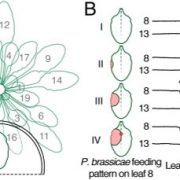
Insect-damaged Arabidopsis moves like wounded Mimosa pudica (PNAS)
Stroking leaves of the sensitive plant Mimosa pudica causes them to fold inwards, but when touched more aggressively the leaf petioles and petioles of distal untouched leaves collapse dramatically downwards (as seen in this video); the propagating electrical signal is called the slow wave potential.…
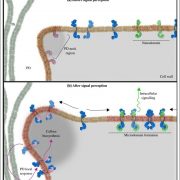
Review. Dare to change, the dynamics behind plasmodesmata-mediated cell-to-cell communication (COPB)
A new review by Petit et al. skillfully highlights the role of plasmodesmata at the interface between cell biology and whole-plant physiology. These tiny channels that connect plant cells determine what moves from cell-to-cell symplastically, so have roles in just about everything, from developmental…
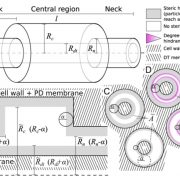
From plasmodesma geometry to effective symplasmic permeability through biophysical modelling (eLIFE)
Plasmodesmata are tiny regulated channels that connect adjacent plant cells through which nutrients, signaling molecules and viruses can move. To try to resolve discrepancies between functional and structural studies, Deinum et al. have developed a model for plasmodesmatal permeability that predicts…

Primer: Rhynie chert ($) (Curr. Biol.)
This short Primer by Strullu-Derrien et al. introduces the amazing early vascular plant fossils from the Rhynie chert. The fossils' high level of detail is a consequence of their being embedded in a glass-like silica matrix, possibly derived from hydrothermal springs. The fossils are approximately 407…

Conversion of Escherichia coli to generate all biomass carbon from CO2 (Cell)
Plants are photosynthetic autotrophs, meaning they use light energy to feed themselves, with carbon dioxide as a carbon source. Heterotrophs like E. coli require organic carbon. Here, Gleizer et al. have rewired the metabolism of E. coli to make it into a (non-photosynthetic) autotroph, meaning it can…
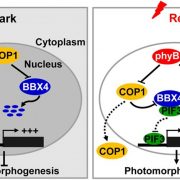
A new B-BOX containing protein regulates red light photomorphogenesis ($) (PNAS)
As the primary red light photoreceptor in Arabidopsis, phyB affects various developmental processes, such as seed germination, shade avoidance, etc. PIF3 is a key repressor of phyB-mediated photomorphogenesis that is degraded in red light. Recently Heng et al. identified a positive regulator of red light…
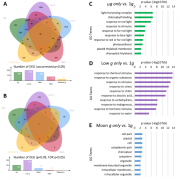
Arabidopsis transcriptional response to fractional gravity during spaceflight under blue-light (Frontiers Plant Sci)
A plant’s response to a microgravity environment allows for dissection of molecular pathways governing gravity sensing and other integrated pathways, such as phototropism. Renewed interest in long-term space travel also requires that plant behavior and growth under microgravity is well-understood and…
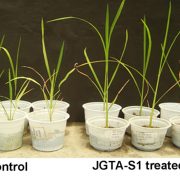
Rice nitrogen nutrition is improved by association with a fungus carrying nitrogen-fixing endobacteria ($) (Plant Cell)
Previously, growth-promoting endophytic (living within the plant) microbes were isolated from plants (narrowleaf cattail, Typha angustifolia) growing in a nutrient-poor site in an effort to identify new beneficial microbes. One of these identified is the fungus Rhodotorula mucilaginosa. Now, Paul et…
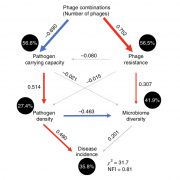
Phage combination therapies for bacterial wilt disease in tomato ($) (Nature Biotech)
Bacteriophages are viruses that infect bacteria. As agents that weaken or destroy pathogens, they have shown therapeutic promise in human and plant disease treatment. Wang et al. studied the effect on pathogenic Ralstonia solanacearum of different phages individually and in combinations in the rhizosphere…

